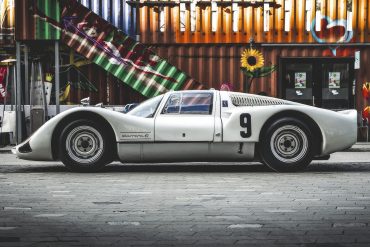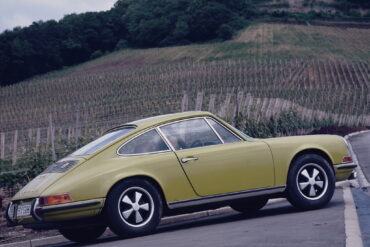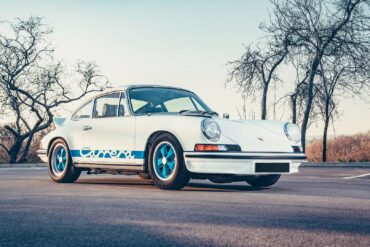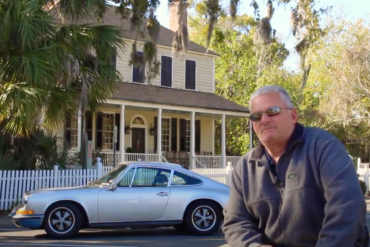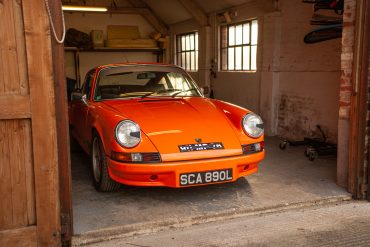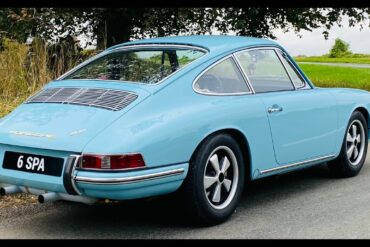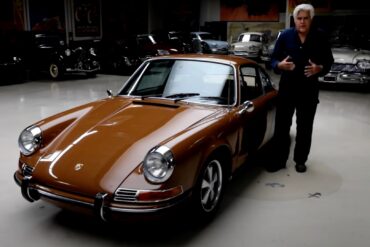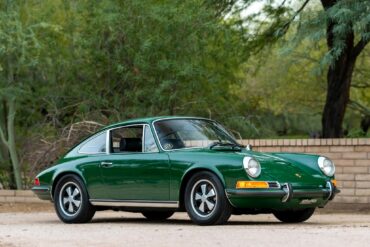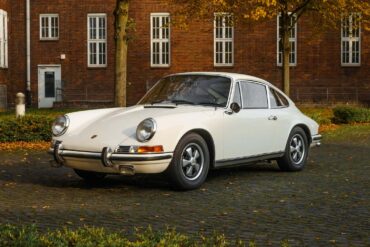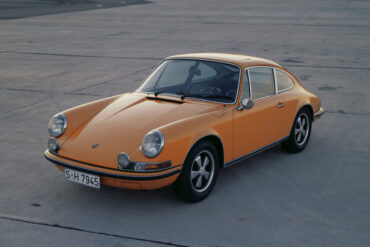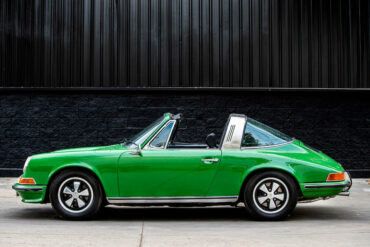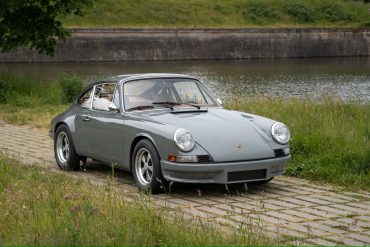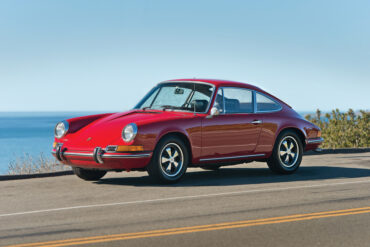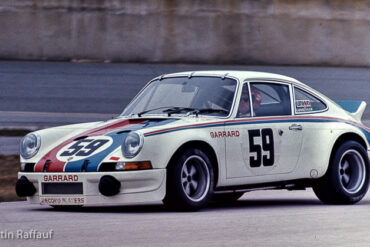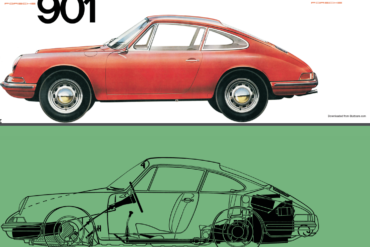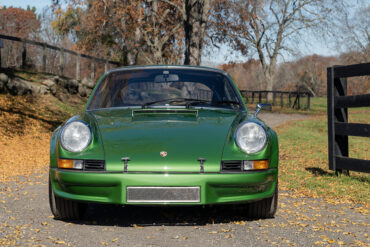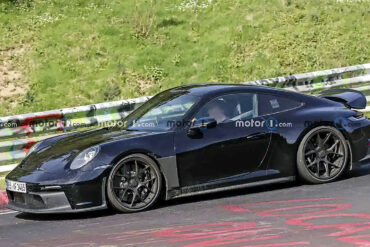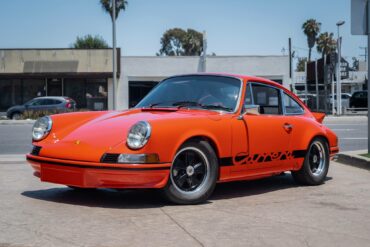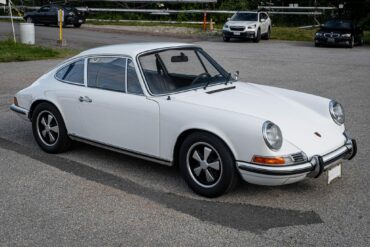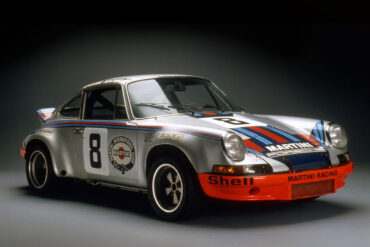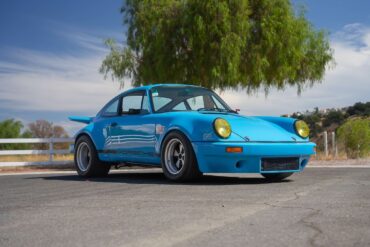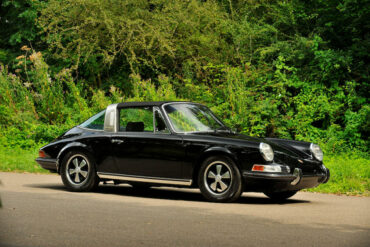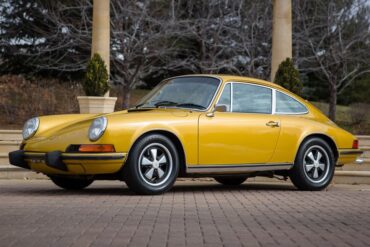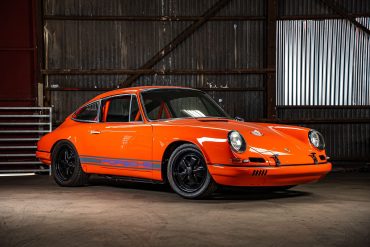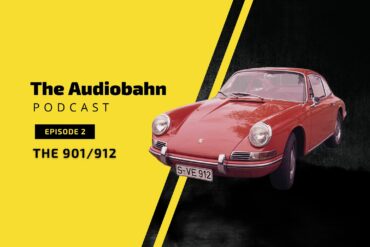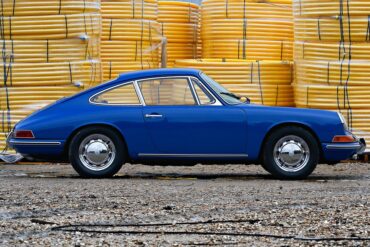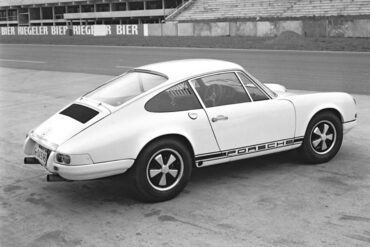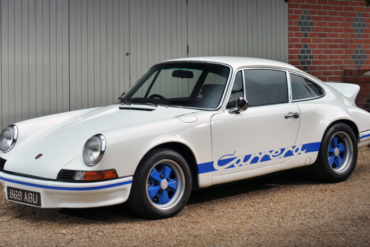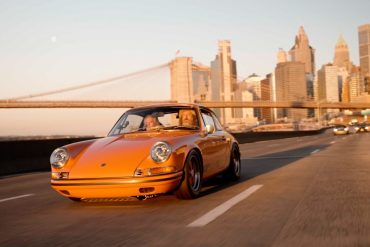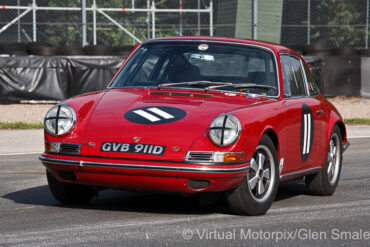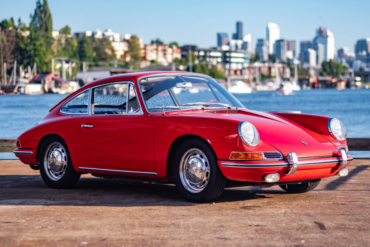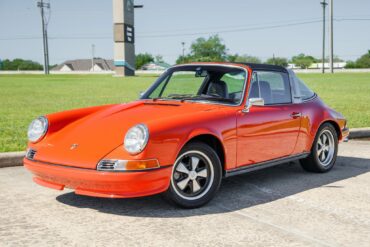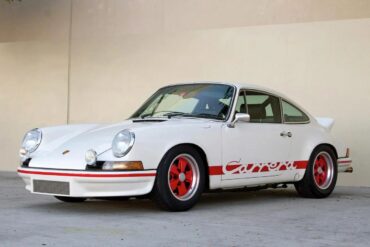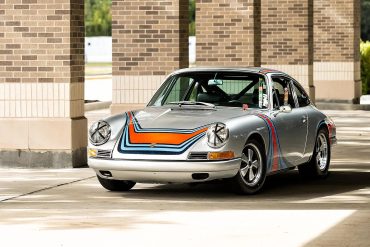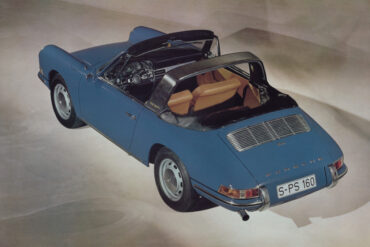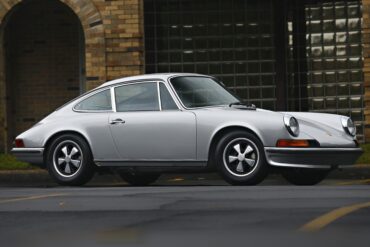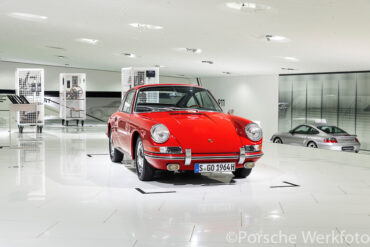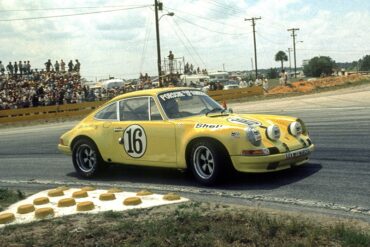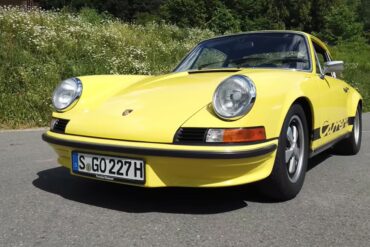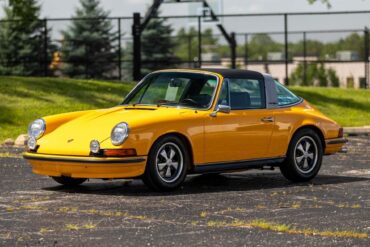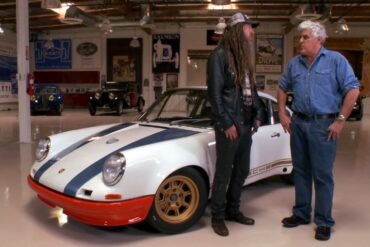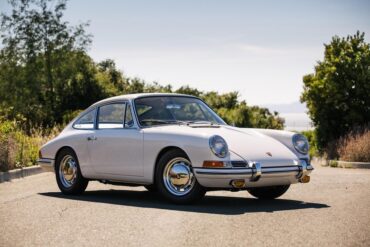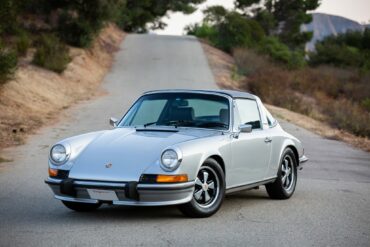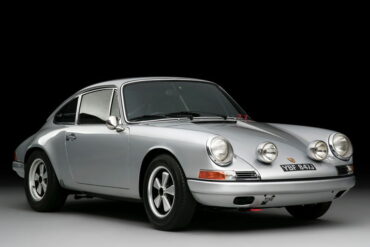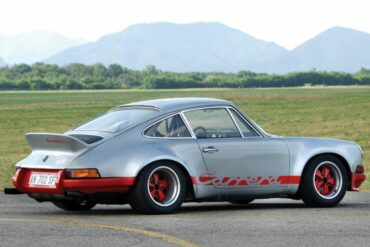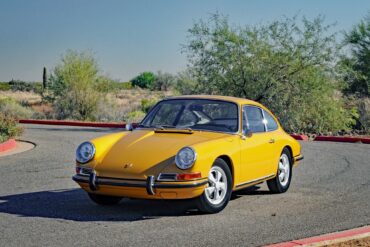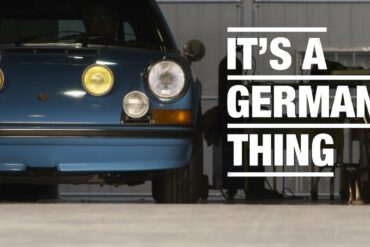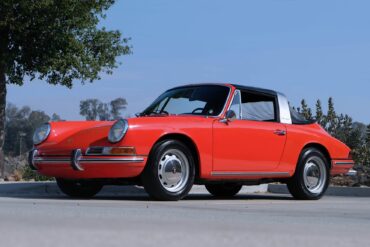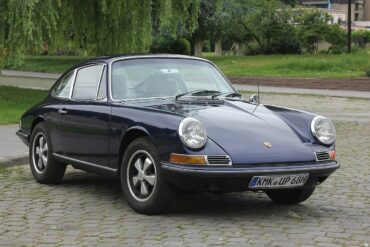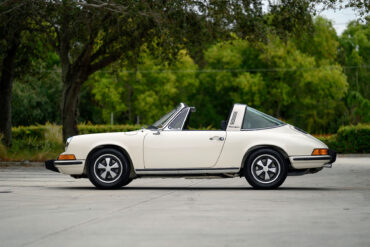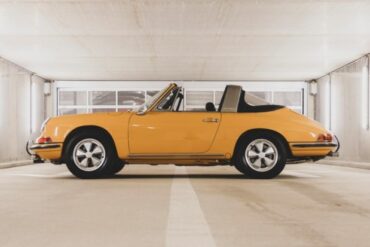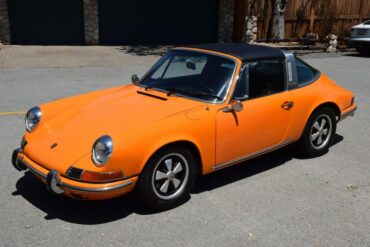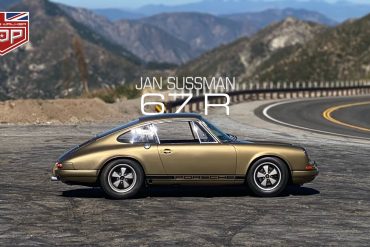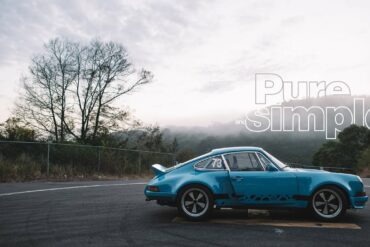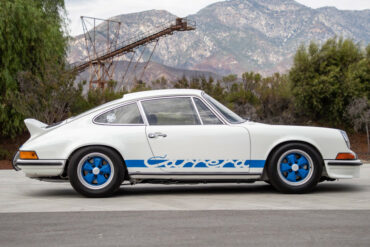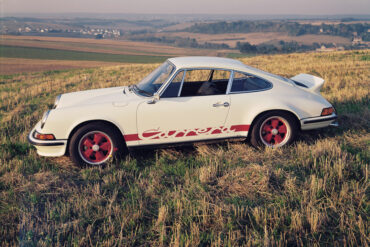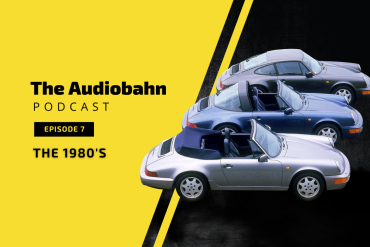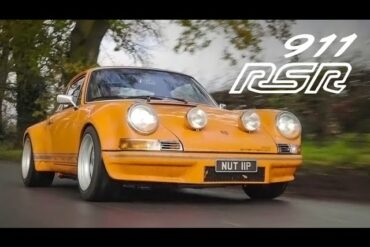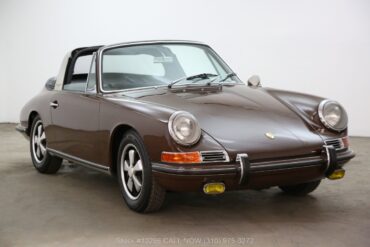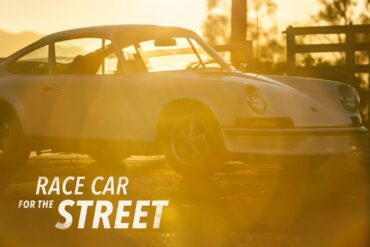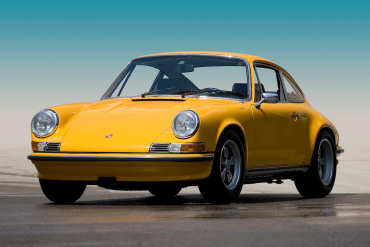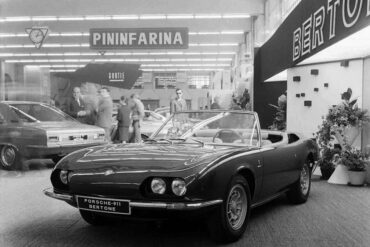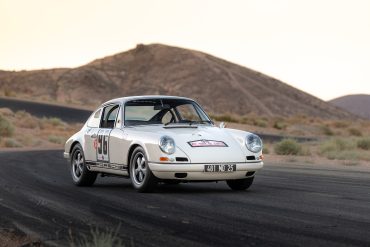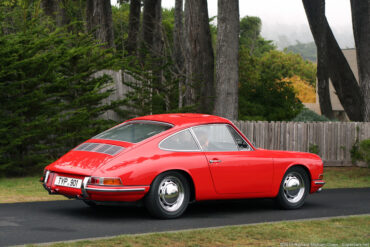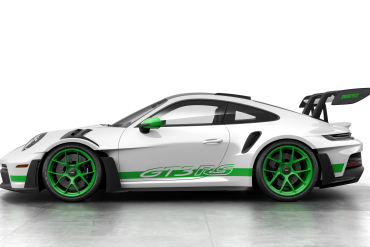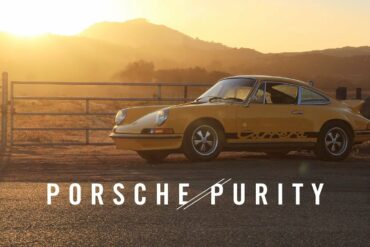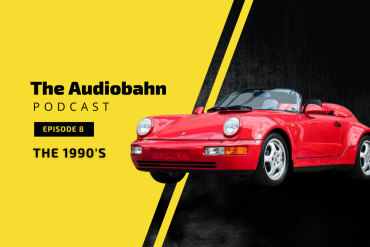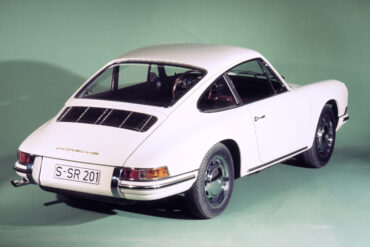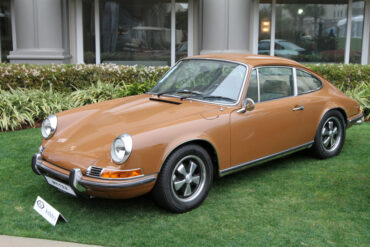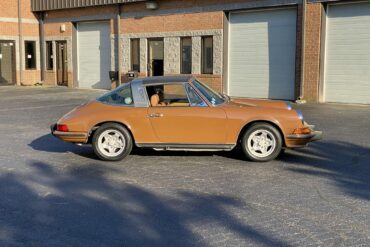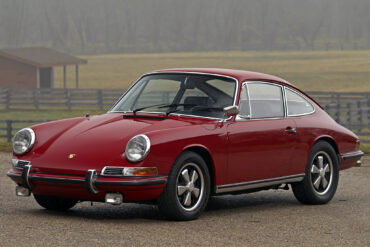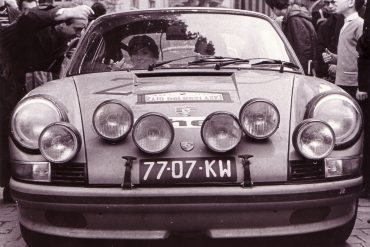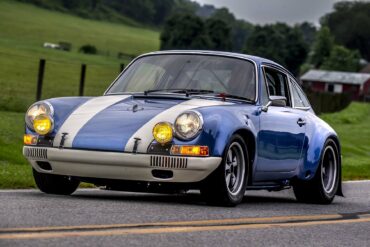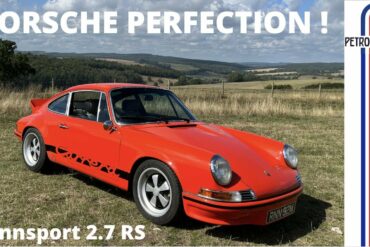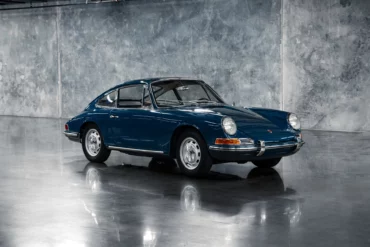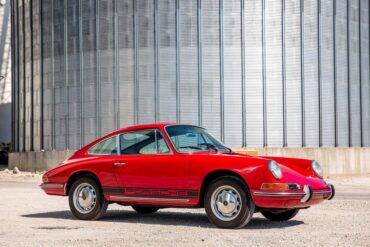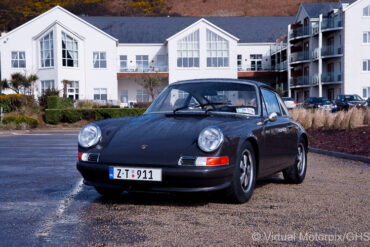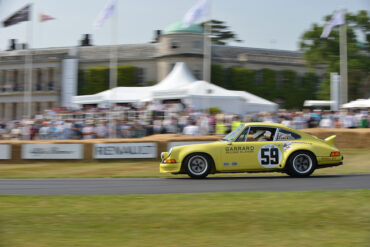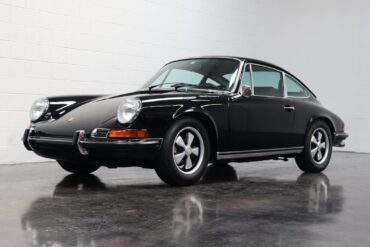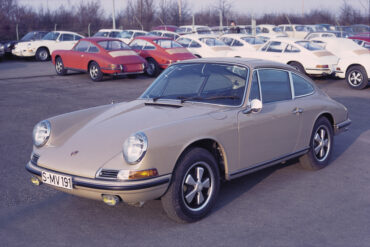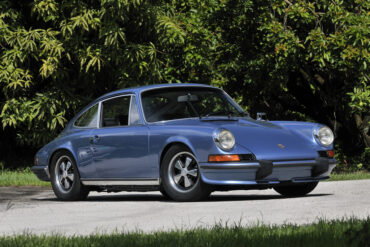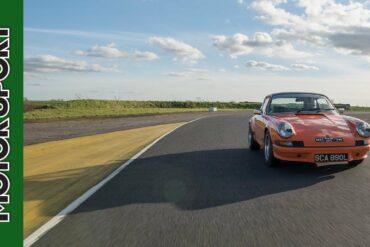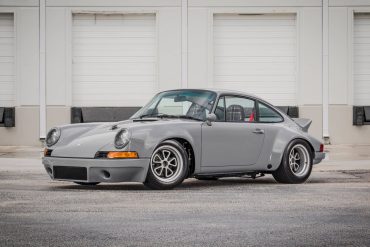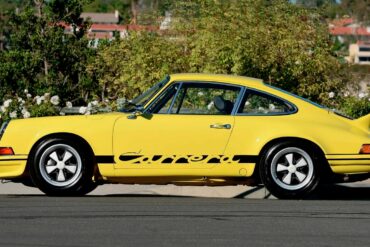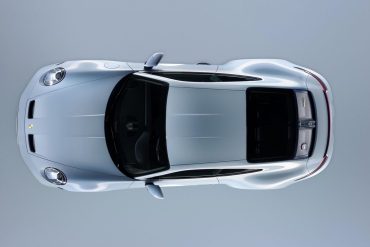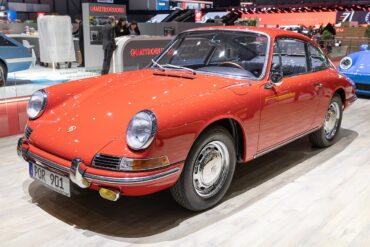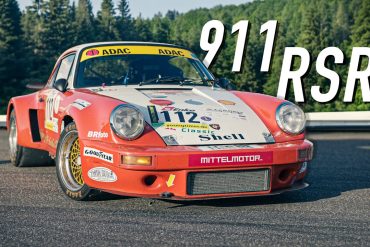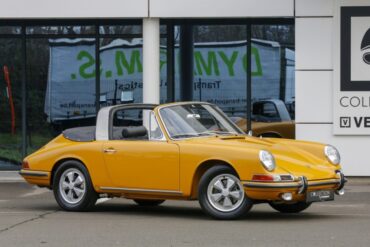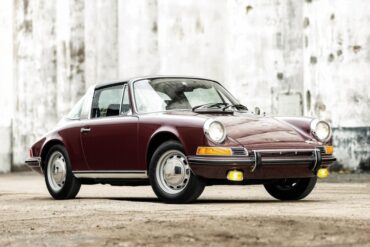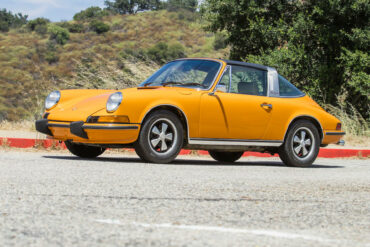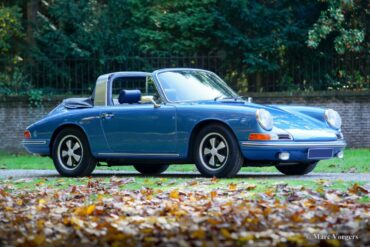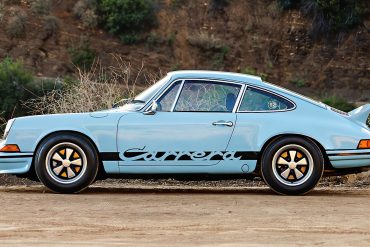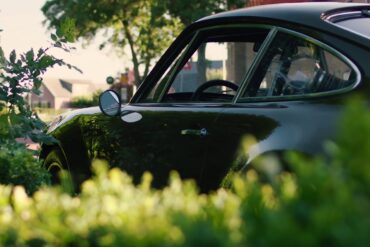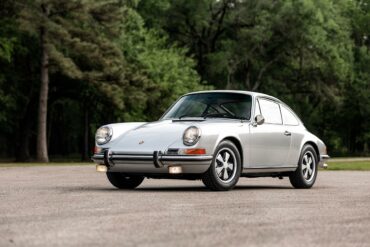Background In the Porsche world, “Luftgekühlt” represents all the air-cooled cars in the manufacturer’s history, from the Pre-A 356 through...
Porsche 911 (F-Series)
The Porsche 911 was introduced to the world in the fall of 1963 at the Frankfurt Motor Show. It was developed as a replacement for the highly successful Porsche Model 356. It was larger, more powerful, more comfortable and more competitive on the track than any other comparable car on the market at the time. The original air-cooled, boxer-engined 911 was in production from 1964 through 1989, but on this page, we are focused on the original F-Body cars. For 1969 Porsche made the single biggest change to the 911 thus far by lengthening the wheelbase 2.5 inches to reduce the oversteer characteristics inherent to rear-engined cars. Pre-1969 cars are often referred to as the short-wheel base cars (SWB) and 1969 onwards called the long-wheelbase cars (LWB). 1972 and 1973 can also be taken as one group because there were very few changes from year to year. See all of our F-Body Classic 911 Research.
1969 Porsche 911 E Coupe 2.0 (LWB) Pictures & Gallery...
1973 Porsche 911 Carrera RS 2.7 Touring Technical Specifications Built At Stuttgart, Germany Price $ $25,000 Engine 911/83 Flat-6 Position...
Interview the owner of a 1971 Porsche 911 In this video we Interview the owner of a 1971 Porsche 911...
Written by: Glen Smale Images by: Virtual Motorpix/Glen Smale and Corporate Archives Porsche AG Already a Member? Sign in to...
1965 911 SWB by Sports Purpose. Is this £350,000 Porsche the purest driving 911 of them all? This ’65 Porsche...
On The Road You’ve followed this Porsche 911 T in the Restoration Blogs, now see and hear this modified boxer...
1970 – 1971 Porsche 911 E 2.2 Coupe (LWB) Pictures & Gallery ...
1970 – 1971 Porsche 911 E Coupe 2.2 (LWB) Technical Specifications Induction Normally-aspirated Cooling Air/oil-cooled Valvetrain Single overhead camshaft Injection...
1970 Porsche 911 S 2.2 Coupé Along with all the C-series improvments to the 911 line, the 1970 Porsche 911...
1969 Porsche 911 S Targa 2.0 (LWB) Technical Specifications Induction Normally-aspirated Cooling Air/oil-cooled Valvetrain Single overhead camshaft Injection Port injection...
This 1971 Porsche 911 T Lightweight ‘Outlaw’ is a stunning classic sports car that has been tastefully ‘resto-modded’ with various...
The Porsche 911L (Lux) was introduced in model year 1968 in both Europe and the United States in coupe and targa variants. Approximately 1,610 samples were produced in total, of which 1,169 were coupes, and 575 were Targas. For the 1969 model year, the 911L would cease to exist, paving the way for a new mid-tier offering in Europe and the US, the 1969 911E, and for the higher-end 1969 911S in North America.
Daytona 24 Hours, 3-4 February 1973: The start 1973 Daytona 24 hours led by John Watson in the Mirage on...
Porsche 911 Sales Brochures (1st Generation) Clearly going back this far, sales catalogs for Porsche cars are hard to find....
Porsche’s 2.8 911 RSR Porsche needed to build 500 RSs in 1973 to get the RSR homologated for Group 4...
Will the lightweight terror from the 1970s inspire a new 911? Porsche rumors are almost as abundant as those surrounding...
1973 Porsche 911 Carrera RS 2.7 Lightweight Pictures & Gallery...
1970 – 1971 Porsche 911 E Coupe 2.2 (LWB) Technical Specifications Induction Normally-aspirated Cooling Air/oil-cooled Valvetrain Single overhead camshaft Injection...
Most Porsche fans know little about this epic wide-bodied 911 based race car. While the iconic 2.7 RS is every fan boys...
This particular 911 was built to serve as a tribute to legendary Carrera RSR race cars of the 1970s that...
1970 – 1971 Porsche 911 E Targa 2.2 (LWB) Technical Specifications Induction Normally-aspirated Cooling Air/oil-cooled Valvetrain Single overhead camshaft Injection...
The 911T Coupe and Targa continued as the entry level 911 for 1972 and 1973. As with the higher-end E and S variants, Porsche upgraded the 911T to a new, larger 2.3 L engine, commonly known as the "2.4 L" engine. With the power and torque increase, the 2.4-liter cars also got the newer and stronger transmission. Non-US versions (ROW), were carbureted and featured the Type 911/57 engine, rated at 130 hp. US-spec 911T's had engine Type 911/51 and were rated at 140 hp.
This 1968 Porsche 911L Coupe, refinished in its original Tangerine color by SOS Customz in Oceanside, CA, received numerous modifications....
Episode Two: The Porsche 901/912 Summary Welcome to The Audiobahn, the Stuttcars.com podcast focused on all things Porsche. In our first...
1965 – 1968 Porsche 911 Pictures & Gallery...
Based on the 911S, the 911 R was produced by Porsche to compete in the FIA’s GT 2.0 category. To make it competitive, the 911R was powered by a flat-six engine, Type 901/22 from the Porsche 906, capable of 210 hp. It went on a diet too, with weight savings coming from everywhere, getting the 911 R down to just 1,800 pounds dry. Four prototypes were constructed after which Porsche had coachbuilder Karl Baur build another 20 customer cars. In the end, because of the modifications to the 911R, the FIA refused to homologate the car.
Porsche 911 Carrera RS 2.7 1973 Porsche 911 Carrera RS 2.7 Engine: 2,687 cc, air-cooled horizontally flat six Production dates:...
In a new video, Magnus Walker interviews Charles Lennon, a dentist from New Jersey, who is also the proud owner...
1966 Porsche 911 2.0-litre – GVB 911D – parked on track at Lodge Corner after practice for the Oulton Park...
1965 – 1968 Porsche 911 Technical Specifications Production Years 1964 – 1968 Built At Germany Body Stylist Ferdinand Price $...
How the RS differs from lesser 911s The 1973 Porsche Carrera RS is instantly recognizable thanks to its distinctive “Carrera”...
1972 – 1973.5 Porsche 911 T Targa 2.4 (LWB) Technical Specifications Induction Normally-aspirated Cooling Air/oil-cooled Valvetrain Single overhead camshaft Injection...
This particular 1973 Porsche 911 Carrera RS is a genuine M472 Touring model that was originally manufactured for the German...
Introduced in 1966 to enhance the performance capabilities of the already successful 911, the 911 S boasted a more powerful...
1967 – 1968 Porsche 911 Targa Pictures & Gallery...
1972 – 1973 Porsche 911 S 2.4 Coupe (LWB) Pictures & Gallery...
1965 Porsche 901 chassis #57 After three years of restoration, the Porsche Museum will finally present one of the newest...
Porsche developed the S/T, of which 33 were built in 1970 and 1971, taking full advantage of new FIA rules allowing a two-inch wider track. Accordingly, wheel arches were widened to accommodate seven-inch front and nine-inch rear wheels. Weight reduction was even more radical, including thinner-gauge steel for the roof and floorpans. Heating ducts, seat slide supports, the glove-box lid, ashtray, sun visors and rear torsion-bar covers were deleted.
It was the first motorsport team-designed consumer grade car, first 911 with a staggered stance, and first factory-installed fixed wing....
Porsche 911 (F-Body) Production & Chassis Numbers (1964 – 1969) ...
The first generation of the Porsche 911 begins in late 1964 and goes through 1968. The "base" model was an instant hit. During this period, Porsche would make continuous improvements and tweaks to the body, to its short wheelbase (SWB) chassis, and to its 2.0 liter flat six engine. Model year 1968 would be the last for the early 911, a transition that would begin with the introduction of the higher output 911S in 1967, followed by the 911L and a new entry level 911T in 1968, and finally, the 911E in 1969. The base 911 was available as both a Coupe and Targa (starting in '67).
1972 – 1973 Porsche 911 S 2.4 Targa (LWB) Pictures & Gallery...
To homologate the 1968 911 for competition purposes, Porsche began with the Spartan 911 T which were a full 54 kg (118 pounds) lighter than their 'S' siblings. Porsche offered clients the opportunity to buy a 911 T outfitted with competition equipment directly from the factory, and the resulting cars have become known as the 911 T/R. They were built in low quantities to a range of specifications depending on their intended competition purposes.
1973 Porsche 911 Carrera RSR 2.8 Technical Specifications Built At Stuttgart, Germany Price $ $22,500 Engine Flat 6 Valve Train...
1967 – 1969 Porsche 911 S Coupe 2.0 (SWB & LWB) Pictures & Gallery...
Custom 1971 Porsche 911T Everybody has their “thing.” For John Willhoit, it’s certainly a German thing. For the past 37...
1968 – 1969 Porsche 911 T Targa 2.0 (SWB & LWB) Technical Specifications Engine Type Flat 6 Induction Normally-aspirated Cooling...
1965 – 1969 Porsche 912 Technical Specifications Base Price in U.S. Dollars 1965: (European Delivery Only) 1966: $4,700.00 1967: $4,790.00...
Porsche’s 911 Starting in 1964 with the original 911, Porsche has produced a line of six-cylinder rear-engine sportscars that could...
1967 – 1969 Porsche 911 S Targa 2.0 (SWB & LWB) Pictures & Gallery...
1970 – 1971 Porsche 911 T Targa 2.2 (LWB) Technical Specifications Induction Normally-aspirated Cooling Air/oil-cooled Valvetrain Single overhead camshaft Injection...
Based on the 911S, the 911 R was produced by Porsche to compete in the FIA’s GT 2.0 category. To...
A Unique Tribute From its humble beginnings, this 1970 911 enjoyed a varied life, most notably as a rather tasty...
Porsche Option Codes – Porsche 911 (1973 Model Year) Looking to decode your 1973 Porsche 911 option codes? Want to...
Revealed at the 1972 Paris Auto Show, the Carrera 2.7 RS was a special model used to homologate the 911 in Group 4 racing. Developed from the 911S, the 2.7 was more potent in almost every area. Compared to the standard Carrera, the 2.7 RS featured a larger engine, wider flares to accommodate the Fuchs alloy wheels, stiffened suspension, larger brakes and a ducktail rear spoiler. The Touring outsold the Lightweight, with a total of 1380 units built (the Lightweight had only 200 units).
The Audiobahn E7: Porsche in the 80s Welcome to The Audiobahn, the Stuttcars.com podcast focused on all things Porsche. In our...
Sublime Or Sacrilege? ‘If you want to build something, build it how you want it.’...
1968 Porsche 911 L Targa 2.0 (SWB) Technical Specifications Type Series Production Car Model Years 1968 Built At Germany Body...
The Ultimate 911 In the early 1970s, Porsche found itself in need of a street car that would allow the...
The 911 Carrera RS 2.7 stands as a testament to Porsche’s dual-use sports car concept. Born out of necessity for...
Southern California Porsche dealer Johnny von Neumann knew what his customers wanted, and a Targa top Targa 911 wasn’t it. With Porsche’s approval, he hired designer Nuccio Bertone to create a one-off 1966 Porsche 911 Spyder, in hopes of launching low-volume production. Just one example was constructed. The engine incorporated a vertically-mounted cooling fan, a 9.1:1 compression ratio and two triple-choke 40PI Solex carburettors. Peak output was 130bhp at 6100rpm and 174lb-ft at 4200rpm. Transmission was via a Type 901 five-speed gearbox and single-plate clutch.
Based on the 911 S, the 911 R was produced by Porsche to compete in the FIA’s GT 2.0 category....
1963 – 1964 Porsche 901 Pictures & Gallery...
Porsche recently announced an update for the new 911 GT3 RS. As a tribute to the 911 Carrera RS 2.7,...
Perfectly Describing the Magic of the 911 2.7 RS Respected architect Jonathan Segal poetically describes what the 1973 Porsche 911 2.7L...
The Audiobahn E8: Porsche in the 90’s Welcome to The Audiobahn, the Stuttcars.com podcast focused on all things Porsche. In our...
In 1963 Porsche introduced their seminal 901 at the 911 at the Frankfurt Motor Show which would be renamed 911 for the 1964 model year. The new car was sold alongside the 356C as an alternative with more power and room for a rear seat. At the 1963 Frankfurt show the public saw Porsches new direction. Compared to the 356 it had a longer wheelbase, a more compact suspension setup and much more power from the flat-6 engine.
1970 – 1971 Porsche 911 T 2.2 Coupe (LWB) Pictures & Gallery...
1972 – 1973 Porsche 911 E 2.4 Targa (LWB) Pictures & Gallery...
The 911 S was introduced to increase the performance potential of the very successful 911. It had a more powerful...
This story covers the development of the Porsche 911 RS/RSR prototype in the middle of 1972. Surprisingly, the very first...
Porsche Club of America recently released a video pitting a 2016 911R against a brand-new 992 GT3. The Audrain Group...
The ST legend The Porsche 1972 911 ST is legendary in automotive history and coveted for its exceptional performance. Under...
Real World Carrera RS Review The 2.7 Carrera RS debuted in October 1972 at the Paris Motor Show, and was...
The first 912s were made in the spring of 1965, alongside the last of the 356s. Originally the 912 was...
Put most simply, a 912 is essentially a 911-style body mated with a 356-derived 4-cylinder engine. The 356 was Porsche’s first mass-marketed sports car. The Porsche 911 is the most successful sports car of all time. the new 912 came equipped with 90HP motor was a slightly detuned version of the 95HP motor that had powered its predecessor, the 356SC. However, despite this reduction of power, and despite the 912 being a heavier car, it was actually faster than the 356SC thanks to more streamlined aerodynamics and a more advanced suspension system.
1973 Porsche 911 Carrera RSR 2.8 Pictures & Gallery...
Porsche Option Codes – Porsche 911 (1971 Model Year) Looking to decode your 1971 Porsche 911 option codes? Want to...
In 1967 the A-Series Porsche production line was divided into the entry-level 911T, the standard 911 L for Lux and the sporting 911S. The 911L was effectively the 911 2.0 from previous years with only very minor updates such as new door handles, a brushed aluminum dashboard, a black steering wheel and other very minor details. In Europe, where it was considered the midrange model it featured engine Type 901/06 (Type 901/07 with Sportomatic) rated at 130 hp. In North America, the 911L was the highest level offering.
The final early 911S befitted from Porsche's 2.4-liter engine the the long-wheel-base body. As such it is one of the final classic 911s before the 2.7 came out in 1973. Visually, the 2.4 range received a new chin on the front valence that was standard on the 911S and optional for the rest of the range. The S model had slight larger 6Jx15 Fuchs alloy wheels over the other models. The final early 911S benefitted from Porsche's 2.4-liter engine the the long-wheel-base body
On Board Dickie Meaden takes you behind the wheel of a Porsche 911 2.7 RS Touring in part one of...
This 1970 Porsche 911 is a one-of-a-kind creation commissioned by Orbit Racing for a complete RSR/outlaw-style restoration, resulting in an...
In less than two weeks Monterey 2022 will start and one of the main attractions is a 1973 Porsche 911...
In the beginning… The engine of the Porsche 911 has come a long way over the past 60 years, now...
1963 – 1964 Porsche 901 Technical Specifications Built At Germany Body Stylist Ferdinand Engine Flat-6 Position Rear, Longitudinal Aspiration Natural...
Most Porsche fans know little about this epic wide-bodied 911 based race car. While the iconic 2.7 RS is every fan boys...
1967 – 1968 Porsche 911 S Targa 2.0 (SWB) Technical Specifications Engine Type Flat 6 Induction Normally-aspirated Cooling Air/oil-cooled Valvetrain...
1970 – 1971 Porsche 911 T 2.2 Targa (LWB) Pictures & Gallery ...
1972 – 1973 Porsche 911 E Targa 2.4 (LWB) Technical Specifications Induction Normally-aspirated Cooling Air/oil-cooled Valvetrain Single overhead camshaft Injection...
1968 Porsche 911 L Targa 2.0 (SWB) Pictures & Gallery ...
The 1973 Porsche 911 Carrera RS 2.7 Lightweight is a true legend in the world of sports cars, representing the...
One Man’s Perfect 911 Short movie about my Porsche 1969 912 that was turned into my dream hot rod 911...
1970 – 1971 Porsche 911 S 2.2 Coupe (LWB) Pictures & Gallery...
No More Content


